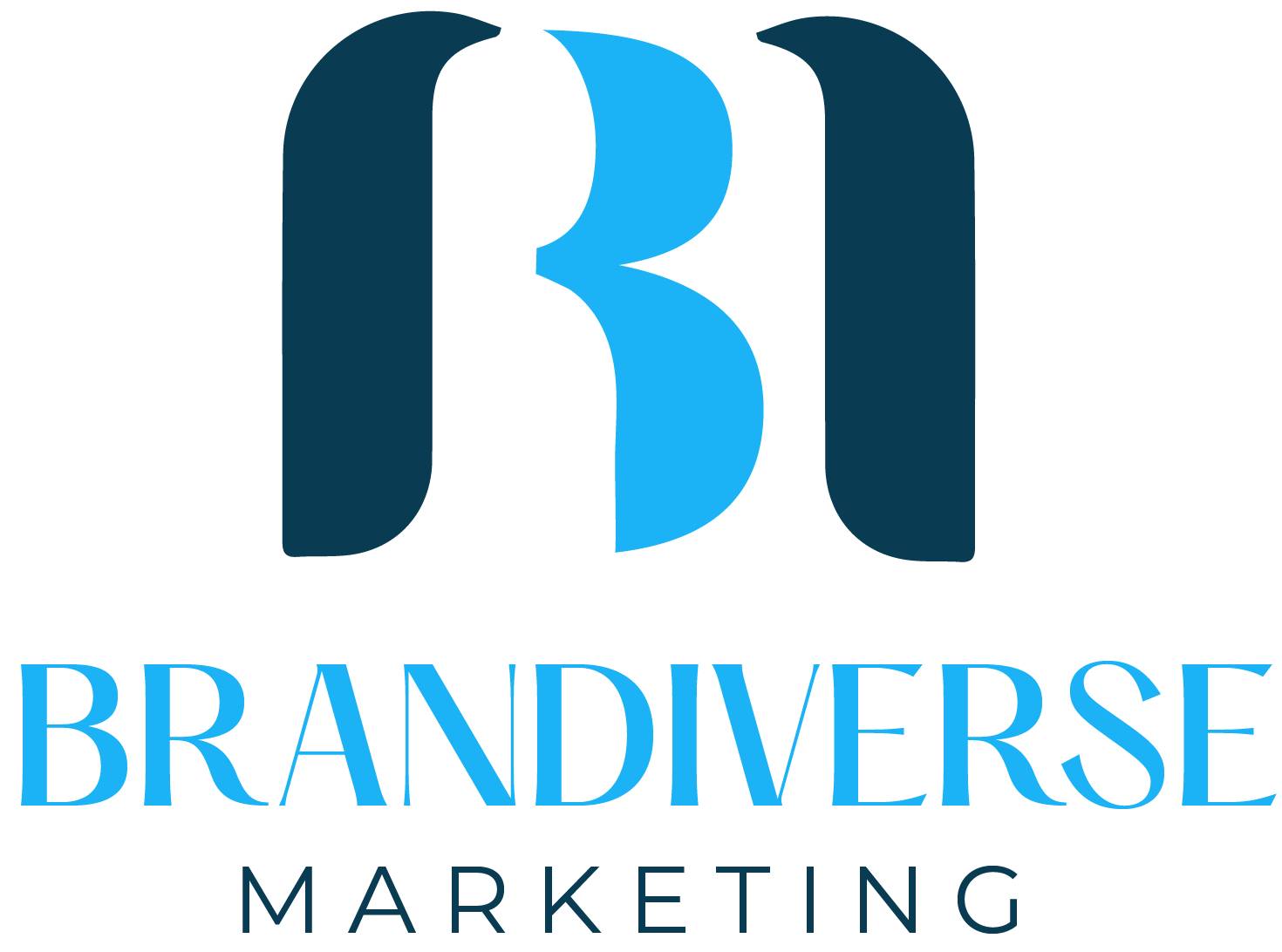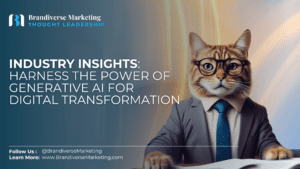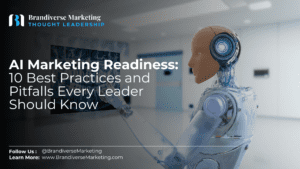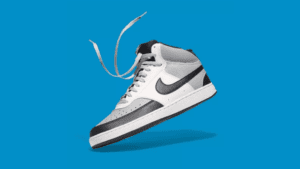1. Define Your Brand Identity
Your brand identity goes beyond your logo and colors—it’s how your audience perceives you and what makes you unique. Think about the brands we love and why. How do you feel when you hear the name Mercedes, Apple, or Whole Foods? The names/logos are attached to a vision and expectation of luxury, innovation, or customer service in your mind and the same goes for your brand. How should your customers feel about you when they interact on your website, with your product, or with your staff. Define the emotions, the utility, and the scenarios where your brand will provide unique value and build your identity from there.
To build a strong brand identity, you must clearly define the following:
- Your Mission and Vision: What’s your business about, and where do you want to go?
- Target Audience: Who are your ideal customers, and what are their needs?
- Unique Value Proposition (UVP): What makes you different from competitors, and why should people choose your brand? To define your UVP, consider what value your product or service brings that others don’t offer, whether it’s better customer service, innovative features, or a unique brand experience.
Example:
Let’s say you’re a local coffee shop. Your UVP might be that you source your beans directly from local farmers, offering a sustainable product and supporting your community. You could emphasize that each cup tells the story of where it came from, creating an emotional connection with your customers.
Subscribe to our contact list
"*" indicates required fields
Consistency builds trust and recognition to attract and keep the right audience for your product/service. Your visual branding includes your logo, colors, fonts, and even the tone of your messaging. To keep things aligned, it’s crucial to do two things:
- Create a Brand Guide: This document should define everything from the exact Pantone or hex codes of your brand colors to the fonts and design styles used in marketing materials.
- Establish a Brand Voice: Whether you want to be friendly and conversational or professional and authoritative, your brand voice needs to be consistent across all platforms.
Pro Tip:
Make sure your visual branding translates well across both digital and physical media. For example, your color codes should be the same on your website, social media, business cards, and packaging. This consistency is pleasing to the eye and creates quick recognition for future interactions.
Example:
A small cosmetics brand used a brand guide to ensure all their visuals matched perfectly on social media and packaging, making them instantly recognizable to customers at both online and offline points of sale.
3. Use AI Tools to Amplify Your Reach
Education and entertainment are the keys to expanding your audience and now, AI tools have revolutionized how brands create content and engage with people. With the help of Generative AI, businesses can quickly develop a variety of content formats that will create more visbility through SEO and Search Marketing, including:
- Articles and Blog Posts: AI tools like ChatGPT can generate drafts or full articles, helping brands create content at scale.
- Podcasts and Webinars: AI tools can help plan scripts, edit recordings, and even suggest topics based on trending subjects in your industry.
- Social Media Posts: AI can generate multiple versions of posts, making it easier to maintain engagement across platforms.
Automation & Efficiency with AI:
AI tools also allow for greater efficiency through automation. CRM SaaS tools like HubSpot and Hootsuite can schedule posts, manage email campaigns, and even analyze your audience data to optimize your marketing efforts. This saves time and ensures consistency.
Use Case:
A small e-commerce brand used AI tools to develop a content calendar for blog posts, social media, and newsletters. By automating much of their content creation, they tripled their posting frequency and saw a 25% increase in online sales in just three months.
4. Create a Strategy to Monetize Your Brand
Monetizing your brand is essential to turning awareness and engagement into revenue. With the rise of digital technologies and AI, brands have more opportunities than ever to create sustainable income streams. Here are the six top ways people are monetizing their brands today:
Direct Sales
Selling products or services directly through your website, social media platforms, or e-commerce stores is the most straightforward way to monetize your brand. Offering limited-time deals, exclusive products, or bundles can increase sales while driving urgency.
Subscription Models
Subscription services offer customers recurring value, whether it’s through monthly product deliveries, premium memberships, or exclusive content. This creates a steady revenue stream and strengthens customer loyalty.
Sponsored Content
Brands are increasingly collaborating with influencers, bloggers, and content creators to produce sponsored posts, videos, or articles. If your brand has a strong online presence, businesses may pay you to feature their products in your content.
Affiliate Marketing
By promoting products or services from other brands that align with your audience, you can earn a commission on every sale made through your unique affiliate link. This allows you to monetize without creating new products yourself, while offering added value to your audience.
Digital Products
Creating digital products such as e-books, online courses, or webinars allows you to package your expertise into a product that can be sold repeatedly with little to no ongoing cost. This is an excellent option for brands looking to scale without physical inventory.
Licensing & Merchandising
For established brands, licensing your brand to other companies can provide passive income. This could involve licensing your name, logo, or content for use in other products. Additionally, selling branded merchandise such as clothing or accessories is a popular way to both monetize and expand brand visibility.
Use Case:
A lifestyle brand built around health and wellness implemented a mix of these strategies. They offer direct sales of products on their website, a monthly subscription for exclusive content and fitness plans, affiliate links for supplements, and even branded merchandise. By diversifying their monetization streams, they tripled their revenue in just one year.
Amplify Your Brand. Get a Free Digital Snapshot
5. Leverage Digital Marketing & SEO to Expand Your Reach
To get your brand in front of as many people as possible, you need a strong digital marketing strategy with a focus on SEO. Search engine optimization (SEO) is the process of making your website and content easily discoverable on search engines like Google. By using the right keywords, structuring your content properly, and building backlinks, you can rank higher in search results and attract more organic traffic.
Pro Tip:
Create SEO-optimized blog content that answers common questions in your industry. Use tools like Google Analytics to identify what keywords your target audience is searching for.
Use Case:
A small legal firm invested in SEO by creating content that addressed common legal questions their audience searched for. Within six months, their website traffic doubled, and they saw a 40% increase in consultations through organic search.
The Wrap Up:
By focusing on these five key areas—brand identity, visual consistency, AI tools, monetization strategies, and SEO—you can build a brand that not only stands out but also drives sustainable growth and revenue. Implementing these strategies will position your brand for a long-term competitive advantage and provide protection during economic shifts.
Elevate Your Brand Identity
Brandiverse Marketing is a digital transformation consultancy and digital advertising agency helping brands modernize their marketing with AI-driven consumer engagement, data strategy, and automation. Follow us on LinkedIn and other social networks @BrandiverseMarketing for more insights and strategies to elevate your brand with AI/AR/Web3 immersive solutions.





